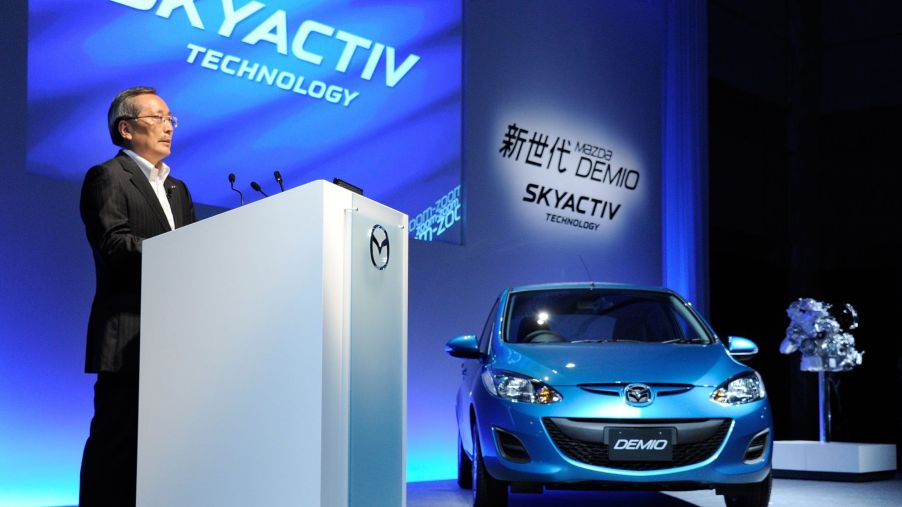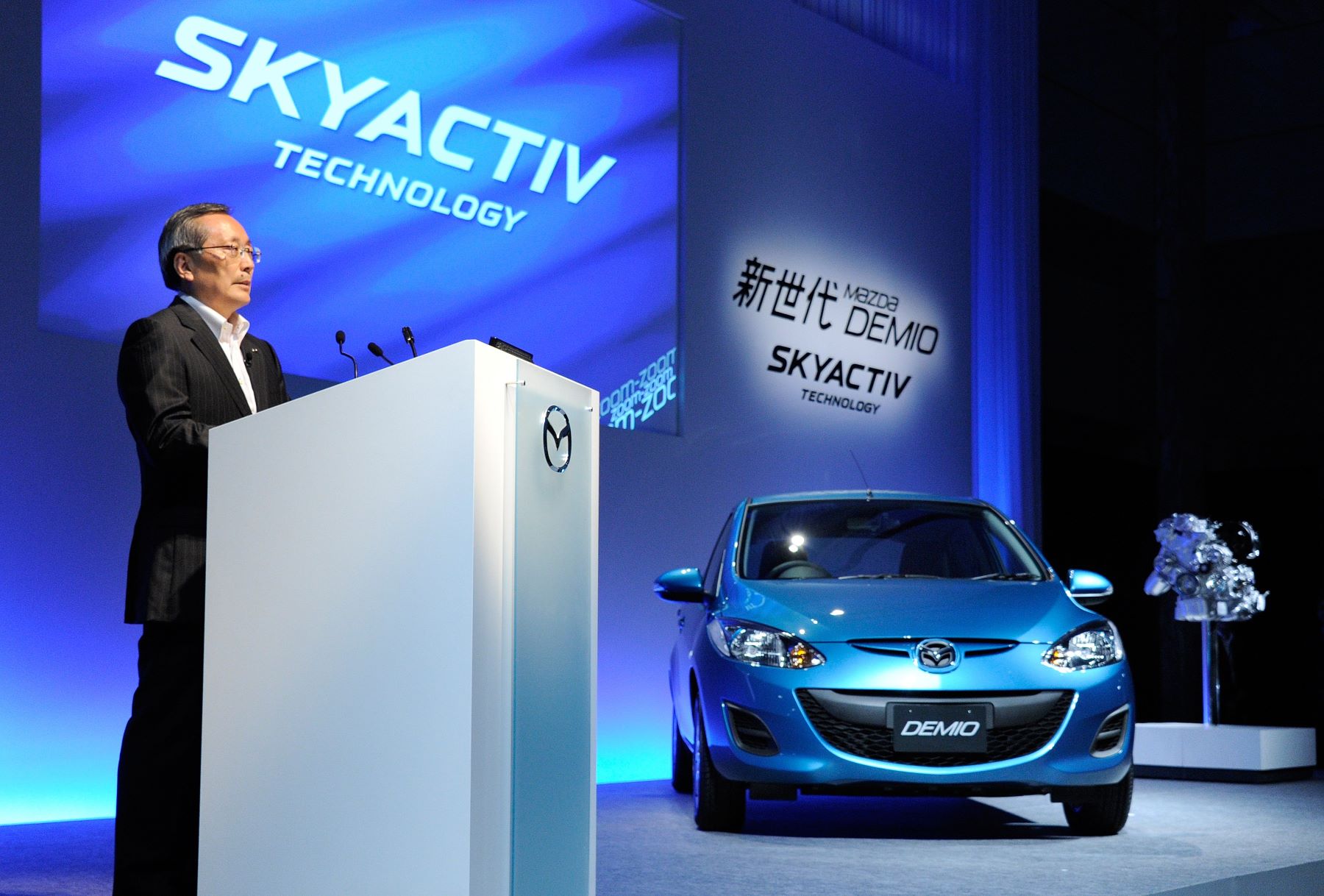
What Is Mazda Skyactiv Technology?
It’s common for automakers to come up with cool names for new or old technology. After all, all other things being equal, you’re more likely to buy the car that sounds more innovative and hip than the one that doesn’t. Mazda hopes its Skyactiv technology (often stylized in all-caps as SKYACTIV) will help persuade you to take a chance on its new sedans and SUVs. So, what exactly is Skyactiv technology? Is it an innovative new feature or an old one repackaged for today’s market? Additionally, is it worth choosing a brand-new Mazda over a similar competitor?
What is Mazda Skyactiv technology?

According to Kelley Blue Book, Skyactiv is a suite of proprietary automotive technology designed to improve the fuel efficiency of the internal combustion engine (ICE). Traditionally, ICEs have only utilized about 30% of the energy they derive from fuel, with the rest being lost as heat that is distributed internally or externally.
With Skyactiv Technology, Mazda has improved its ICE fuel efficiency by raising its compression ratio to 13:1. Automotive engineers have attempted to do so for decades to improve fuel distribution and optimize engine cylinder cooling. However, most vehicles released over the past few decades have only had compression ratios ranging from 8:1 to 12:1.
Skyactiv Technology also attempts to retain and reuse as much exhaust gas as possible. Combining a higher compression ratio and recycled exhaust gas has helped Mazda improve its ICE power and efficiency by 15%. These features are also aided by cylinder deactivation technology, which is now common on every Mazda3 model. The cylinder deactivation feature disengages the cylinders when the vehicle maintains a constant highway speed or operates in a minimal load state.
What makes up Skyactiv Technology?
Mazda Skyactiv Technology is comprised of multiple components. The first is the Skyactiv-G engine, which enjoys the 15% boost in power and efficiency. Mazda manufactures these engines in 2.0-liter, 2.5-liter, and 3.3-liter sizes, allowing prospective buyers to enjoy the improvements in multiple brand variants.
Mazda couples the Skyactiv-G engine with two different transmission choices. There’s the Skyactiv-Drive, a six-speed automatic transmission that offers rapid acceleration, greater responsiveness, and improved efficiency. For those who prefer a manual transmission, Mazda offers Skyactiv-MT, a six-speed manual option.
However, Mazda’s Skyactiv suite consists of more than just the powertrain. The automaker has designed a new body and chassis for its Skyactiv-equipped vehicles. Paired with the SkyActiv-G engine and the Drive or MT transmission is a lighter but sturdier frame, allowing these vehicles to be more agile at low speeds and more stable at high ones.
Additionally, Mazda has developed Skyactiv-Vehicle Dynamics with G-Vectoring Control, a suite component that shifts force, power, and weight automatically to improve driving responsiveness. This technology provides drivers with a smoother ride, especially when cornering, as well as greater vehicle control.
Which vehicles come equipped with Skyactiv technology?
Mazda uses a variation of Skyactiv Technology on all of its new vehicles. In addition to the Mazda3, you’ll find the 2.0-liter Skyactiv-G engine in the CX-3, MX-5, and CX-30. The 2.5-liter version can be found in the Mazda3, Mazda6, CX-30, CX-5, CX-50, and CX-9. It, as well as the 3.3-liter version, are options in the upcoming CX-60. You’ll also find these transmission options in different trims of these vehicles.
Still, the improvements in the Skyactiv-G engine aren’t the ceiling for Mazda‘s engineers. They’ve worked hard on the next generation of more efficient ICEs that achieve an even higher compression ratio. Recently released to the market, the Skyactiv-X engine improves the compression ratio to 16:1 and can improve fuel efficiency by between 20 and 30%. 2.0-liter Skyactiv-X engines are currently available in premium Mazda3 and CX-30 models, while 3.0-liter versions are available for new, premium CX-60 builds.
Mazda Skyactiv Technology isn’t limited to ICE improvements. Mazda has been working to improve its hybrid offerings using Skyactiv-G engines. Additionally, the automaker has been working on a low-compression diesel engine on the Skyactiv platform that improves fuel efficiency while reducing emissions. While some models incorporating these “Skyactiv-D” engines have been recalled for design defects, Mazda has actually developed a suite of automotive tech that delivers improved performance. Skyactiv isn’t just a rebrand of old technology. Mazda’s engineers have truly designed better internal combustion engines.



